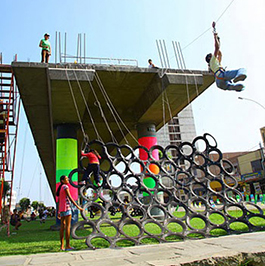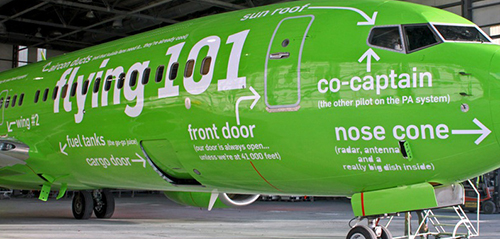Encouraging Playful Touch
 Monday, March 15, 2010 at 7:18AM
Monday, March 15, 2010 at 7:18AM Touch Lubricates Sports — and every other interaction
(Yeah, I think so too — slightly awkward title, huh?)
The latest study, by Michael W. Kraus, Cassy Huang, analyzed how much pro basketball players touched each other. They found that, mostly, the teams that touched each other the most were better teams…
Scientists and psychologists have long known that touch is important in families and between lovers or mates. This is another example of how that oxytocin boost that comes with warm and friendly touch can improve all kinds of human interactions.
One of my primary interests in play is in the intimacy it can engender among those who play together. I am of the opinion that fostering this is the greatest and most rewarding challenge of creating playful technologies. It’s fairly easy to design technologies that consume a player’s attention (even in a multi-player game) or are singularly focused on the amusement of only an individual. It’s difficult to create something that draws people’s attention to one another.
So here’s a compelling question. How do we create playful technologies that encourage people to play socially, form connections, and even to touch each other? (Keep it clean, people.) There’s not a simple answer. But touch-centric technologies that could enable such play do exist. And I don’t mean a touch screen; I mean good old-fashioned human contact.
NTT, the Japanese communications company, has developed a technology that could prove to be an interesting ingredient in this recipe:
New technology uses human body for broadband networking
By sending data over the surface of the skin, it may soon be possible to trade music files by dancing cheek to cheek, or to swap phone numbers by kissing.
And then, there’s also Skinput: Appropriating the Body as an Input Surface [video]
We present Skinput, a technology that appropriates the human body for acoustic transmission, allowing the skin to be used as a finger input surface. In particular, we resolve the location of finger taps on the arm and hand by analyzing mechanical vibrations that propagate through the body.
I can imagine a number of scenarios where a human-contact-based play system could achieve ends few other things can. When we play, it’s okay to invade personal space (think of wrestling on the floor with your sibling or child or just playing any of a variety of organized sports). In cultures that shy away from touch (whether at the macro level — like an entire nation — or at the micro level — like a family), playful touch might be the only avenue to relating and bonding through human contact that exists.
Maybe corporate “ice breaking” exercises don’t have to be so lame. Imagine what could come from touching a family member with whom expressing physical affection has not previously been possible. Or consider a foster child with an attachment disorder; bonding through playful touch might be one excellent way to reach him or her.



